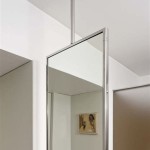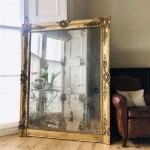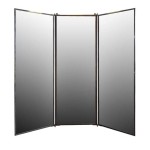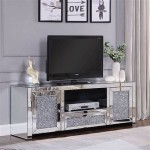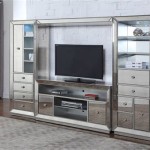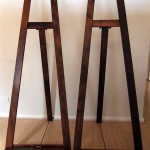Vanity Mirror Light Fixtures: Illuminating Your Reflection
Vanity mirror light fixtures play a crucial role in bathrooms and dressing areas, providing essential illumination for grooming and enhancing the overall aesthetic of the space. Selecting the right fixture involves considering various factors, including style, lighting type, placement, and energy efficiency. This article will explore these aspects to guide informed decision-making.
Types of Vanity Light Fixtures
Several vanity light fixture types exist, each offering distinct advantages and contributing to a specific ambiance. Common options include:
Sidelights: These fixtures are typically mounted on either side of the mirror, providing balanced, even illumination. This arrangement minimizes shadows and is ideal for tasks requiring precision, such as applying makeup or shaving.
Top Lights: Fixtures installed above the mirror offer downward-directed light. While this can be effective, it may create shadows underneath the chin and nose. Pairing top lights with sidelights often mitigates this issue.
Backlit Mirrors: These mirrors incorporate integrated lighting within the glass, offering a diffused, ambient glow. Backlit mirrors can create a modern, sleek aesthetic and complement other light sources in the room.
Strip Lights: LED strip lights offer flexible placement options and can be installed above, below, or around the mirror. These fixtures provide customizable lighting levels and color temperatures.
Sconces: Wall-mounted sconces offer a versatile lighting solution, suitable for both traditional and contemporary bathroom designs. They can be placed on either side of the mirror or used as accent lighting.
Chandeliers: For larger bathrooms or dressing areas, chandeliers can add a touch of elegance and provide ample illumination. Choosing a chandelier proportionate to the space is essential to avoid overwhelming the room.
Lighting Considerations:
The quality of light emitted by a vanity fixture significantly impacts its functionality and the overall atmosphere of the space. Key factors to consider include:
Color Temperature: Measured in Kelvin (K), color temperature describes the warmth or coolness of light. Lower color temperatures (2700K-3000K) produce a warm, yellowish light, while higher color temperatures (5000K-6500K) emit a cooler, bluer light. A color temperature around 4000K is generally recommended for vanity lighting as it provides a balanced, natural-looking light suitable for grooming tasks.
Color Rendering Index (CRI): CRI measures a light source's ability to accurately render colors compared to natural light. A CRI of 80 or higher is desirable for vanity lighting, ensuring accurate color representation for makeup application and other activities.
Brightness: The amount of light emitted by a fixture is measured in lumens. The required lumens depend on the size of the bathroom and the specific needs of the user. A general guideline is to aim for 70-80 lumens per square foot.
Dimmability: Dimmable vanity lights offer greater control over the brightness and ambiance of the space. This feature allows users to adjust the lighting to suit different needs and moods.
Placement and Size:
The placement and size of the vanity light fixture are crucial for optimal illumination. Generally, fixtures should be positioned at eye level, approximately 60-65 inches from the floor. For sidelights, the fixtures should be spaced evenly apart, typically 28-30 inches. The width of the fixture should be slightly smaller than the width of the mirror to maintain a balanced aesthetic.
Style and Finish:
Vanity light fixtures are available in a wide range of styles and finishes to complement any bathroom décor. Popular styles include modern, traditional, transitional, and farmhouse. Finishes such as chrome, brushed nickel, bronze, and brass can further enhance the aesthetic and coordinate with other fixtures in the room.
Energy Efficiency:
Energy-efficient lighting options, such as LED bulbs, are becoming increasingly popular for vanity fixtures. LEDs consume less energy than traditional incandescent bulbs, resulting in lower electricity bills and a reduced environmental impact. Additionally, LEDs have a longer lifespan, reducing the frequency of bulb replacements.
Maintenance
Regular cleaning of vanity light fixtures is essential to maintain their appearance and functionality. Dust and debris can accumulate on the fixtures, reducing light output and potentially damaging the finish. Cleaning can be done with a soft cloth and a mild cleaning solution. Always disconnect the power supply before cleaning any electrical fixture.

Best Bathroom Vanity Lighting Lightology

Best Bathroom Lighting Options For Shaving Putting On Makeup

Bathroom Light Fixtures Guide Lights Com

Vanity Mirror Light Art Deco Bathroom Fixture Wall

Best Bathroom Vanity Lighting Lightology
:strip_icc()/101689996-61c812dfbcc045448f172bc7ab06922f.jpg?strip=all)
30 Bathroom Lighting Ideas For Every Decorating Style

Vanity Mirror Lights In Jd Lighting

3 Light Bathroom Vanity Fixture Color Dimmable Led Lights Over Mirror Above Modern Chrome Metal Wall Sconce Lighting For Bath Sink Restroom Bedroom Living Room Com

How To Get Your Bathroom Vanity Lighting Right

18w Modern Electroplated Brass Gold Led Wall Light Mirror Vanity Picture Lamp Warm White Ashish Electrical

